all of the selves we Have ever been
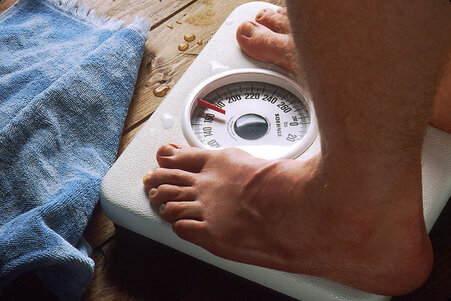 Ever have one of THOSE days? You know what I’m talking about. You wake up in the morning and you are already tired—the worst possible way to start the day. One of THOSE days is a day when everything you touch experiences system failure. You try to pay a bill that is due today. You go on line and the computer freezes and the site goes down. How you discover that the refrigerator quit working during the night is by pouring sour milk on top of the last bit of cereal and taking a rancid bite. You go to your car in the pouring rain to find the tire pressure light is on. Road construction is blocking your driveway, and you pull out into speeding traffic like a blind woman in a pedal car with wobbly wheels. Each tiny cut of discouragement leaves you bleeding on the curb of life and you have to pretend you booked this location just to take in the view from below. I am not talking about a full blown state of clinical depression. I am just talking about one of THOSE days. On one of THOSE days, you lose all knowledge of how the world works, except this: you know from experience that it is not a good day to weigh yourself. You have been around long enough to know that there are things you should never do when under the influence, but adding insult to injury is what you do under the influence of one of THOSE days. You try to talk yourself out of it. You are long familiar with this particular brand of self-harm, this proof that you are a loser but not of pounds. You know you should just get into your car and start driving to a Betty Ford Clinic to address this relapse in your addiction to self-hatred, but you don’t. You step on the scale instead, and just as you knew would be the case, the needle moves up. And then you chastise yourself for having been a fool when you should have known better, and you curse the gods that gave you a slow metabolism, a hefty bone structure, big feet, and a serious water retention problem. You know the number on the scale can’t possibly reflect the portion-controlled few morsels you ate yesterday. It is all more evidence of the cosmic injustice that is your life. You can never admit any of this inner drama to anyone, and so you try to act like a normal human being. The demands of life propel you forward into the day. You dress and face the weather and the traffic. You blast some old Motown hits from your playlist and sing along as you drive. You get to work and get busy. You engage with people you like. You solve problems. You make plans. You take a walk. Slowly, you forget that you hate yourself and the world. By lunch you convince yourself that your morning fast and the calories burned in the fire of angst make it safe to eat lunch. And you do. And you feel better still. And the work day ends, and you realize that slowly, while you weren’t looking, one of THOSE days became a GOOD day. You offer thanks to the Great Day Trader who gave you a better day than the one with which you began. And you do not weigh yourself when you get home.
0 Comments
 “A mind is a terrible thing to waste.” Arthur Fletcher, United Negro College Fund “In my head I was thinking.” The speaker loses me right there. His brain may be a luxury liner, and he may be about to tell me the secrets to world peace, climate change reversal, and how to grow thicker, more luxurious hair, but my thoughts dive overboard. I replay his words while awaiting underwater rescue: “In my HEAD I was thinking.” “In my head I was THINKING.” I want to interrupt the speaker and ask, “Where else would you be thinking?” But my son’s insistent voice tugs on my mind in the same urgent way that he pulls on my arm in a department store when I am about to confront a shoplifter: “Mom, it doesn’t work that way anymore.” Oh! And uh-oh! Another reminder that I am either touched or out of touch, drowning in a sea of changes. The most fundamental truths no longer hold water: now we must qualify where our thoughts come from. No expert, but ever curious about why people do what they do and say what they say, I take a deeper dive. What better arena to find people talking than in politics? I listen. I try to grasp the thoughts behind the words. I try different news sources, and then I ask myself: Did that really come out of the head of a person educated at Penn? Yale? Harvard? Stanford? Pretty pricey educations. And in my head I think I have found the reason to forgive student loans. Just to be sure it’s not just me struggling with the question of where thought comes from I turn to a friend about one of her recent experiences. Needing assistance in a store, my friend approached the customer service desk where another woman was already waiting for help. No one came to staff the desk. After waiting a bit, the women approached an employee stationed in the self-checkout area to assist customers who, shockingly, were having problems with self-checkout. On the surface, it seemed like the customer service representative and the two women shared the same language, but this customer request for a manager or someone to assist them just did not seem to compute in the young employee’s head. Finally, he pulled a response from the same pocket where he keeps his much smarter phone: “There’s no one here that can help you.” End of discussion. Problem unsolved. My friend, a very bright woman who carries a big engine in her own head, persisted, “Well, who would you call if the store caught on fire?” That seemed to get the lights flickering in the young man’s eyes: “Oh! That would be Tom?” “Well, could you call Tom?” Tom never appeared but the two women with the thinking heads solved their own problems. Back at home, I watch a neighbor walk down our shared hallway, dripping and dropping food onto the carpet as he goes. Not unnoticeable, and yet he keeps walking. Keeps dropping. Keeps spilling. And steps in it! Days pass. No attempt is made to clean up the mess. His smart phone is on and updated, but his beautiful head is on lockdown. At work people appear to be busy on their computers. They receive a constant stream of music and podcasts from their earbuds. As their minds process all of that sensory stimulation, I wonder: where do they think? And when? I would ask them, but they can’t hear me. Wonderful people I’ve known for a lifetime are suddenly up in arms about a variety of conspiracy theories. Salacious, crazy ideas picked ripe from the internet and social media are turning their good minds into debris fields. No thought or fact checking required. All of their mental input is handpicked and arranged by AI the new thought generator. I contemplate the notion of “artificial” intelligence. Is that an oxymoron? Or a bad substitute like ill-fitting dentures? Whatever AI is, it bears a shocking resemblance to the artificial additives that enhance the color, flavor, shelf-life, and addictive qualities of processed food. All of the flavor but none of the calories. And none of the nutrition. Seems to me the food giants do their thinking in their wallets. Never mind that artificial ingredients have led to an obesity epidemic that is the leading cause of death in America. Perhaps they learned this approach from the tobacco industry whose product is known to kill one out of every two of its best customers. And so, in my head, I ponder: What does this new artificial substitute for thought mean for our minds? After tobacco, it was food. Now it is technology. We are already experiencing AI poisoning. Maybe we will eventually kill each other. And like the tobacco and food companies before them, big tech owners will stand back and claim it was all “freedom” regardless of their industry’s psychological manipulation. But, by then, the big tech guys will own all the real estate on Mars and the only rockets to get there. Don’t you love freedom? The life of the mind is under siege. The future of thought is not looking good. What is to become of that vault of jewels that makes us human, the many faceted gems of thought, wonder, creativity, and empathy polished by time, experience, education, flexibility, maturity, and relationships? What happens when our heads are as junk-clogged as our arteries? A poor swimmer in these uncharted waters I doggy paddle to stay afloat. I conclude that psychologically manipulated information--no matter the volume--is not thought any more than Cheetos are nutrition. To the in-my-head-I-was-thinking-guy—I owe you an apology. And some credit for trying. 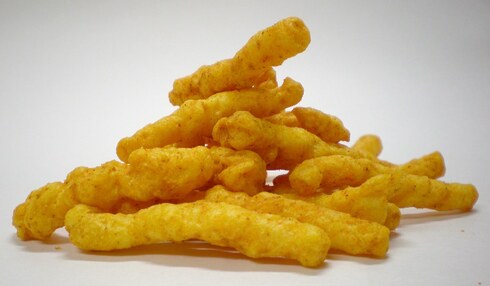 I had not felt well for several days. Sick of feeling miserable I got it into my head that the cure was Cheetos, but I had none. I learned long ago the dangers of keeping snack foods in the house, and so I never do. But as I said, I got it into my head that the cure for my malaise was Cheetos, extra crunchy. So, in the middle of a thunderstorm, I got into my car and headed for the nearest convenience store. Of course, there were no snack-size bags available. It would be the share-size or nothing. The first warning bell rang. Despite the sounding alarm, I did not run for the door. I stood there studying the image of the skateboarding cheetah in sunglasses. He looked happy with a giant Cheeto in his hand. His white high-top sneakers looked lovely too, and I couldn’t help but notice that he was quite slender, undernourished even, for a carnivore. Maybe Cheetos are a health food. I was easy prey, and I grabbed a bag. I approached the check-out feeling like a teenager about to get an overhead price check on tampons or condoms, but there was no cashier behind the counter. The second warning bell chimed. For an instant, I pondered the possibility that God was giving me another chance to make a better decision. I set the bag of Cheetos on the counter as I waited for the cashier. Though it was inadvertent, I had remarkable precision in aiming the price code at the resting scanner. The cash register began ringing up the Cheetos over and over again. Strike three and red alert! God was going rounds with the devil. The cashier came running to the register from some unseen location behind me. It was too late now. The devil had gained the advantage. Now, I had to buy the Cheetos. As the young lady deleted the repeated charges and started to tally my actual purchase, I felt compelled to explain that I don’t usually eat such foods. “Mm-hmm.” I could see that she didn’t care one bit about my dietary habits or if I was telling the truth. She worked in a convenience store, for God’s sake, the devil’s outpost. She wasn’t there to hear confession. I grabbed my purchase from the counter and dodged hail on my way back to the car. Alone inside my vehicle I tore open the package. Lightening flashed as I glanced at the calories per serving printed on the bag. Why did I do that? Now I knew the cost of sin. I set about negotiating. I vowed I would eat just one serving. And then I vowed that if I ate more than one serving, I would balance out the calories throughout the rest of the day. And then I vowed just to make it home. I showed amazing restraint in the car. I ate just one Cheeto. I have to admit that it was pretty darn good. And then I made it all the way into the house. With each Cheeto I consumed, I renegotiated the serving size. Pretty soon, I did feel better. How many Cheetos did it take to cure my ills? I’m not saying, but it was enough to leave a big orange stain on my soul. 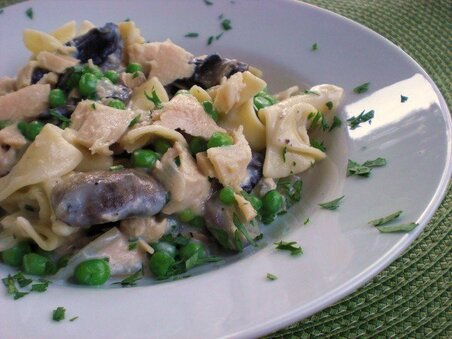 I turn the page on my calendar and discover that today is World Tuna Day. A sometimes lapsed Catholic, I wonder if this might be a new Holy Day of Obligation. For the non-Catholics out there, a Holy Day of Obligation is a day on which Catholics are expected to attend Mass and refrain from work and other activities that might interfere with their worship of God. I consider attending Mass, but that sounds like work to me, and I am too late anyway. I will add this latest lapse to my growing list of sins to be reported the next time I seek confession which is a Sacrament, another type of obligation, but not one that takes up an entire day, unless you are a child of Satan and have a lot to report. With my curiosity aroused, I turn to the Tree of Knowledge to fish for some answers. According to the information posted on www.un.org, in 2016 the United Nations passed a resolution making May 2nd World Tuna Day in order to spread the word about the dangerous situation faced by this important fish. Apparently, the future of tuna is threatened by overwhelming demand and unsustainable fishing practices. Overfishing has endangered the species and the delicate ecosystem of the ocean’s food chain. Overfishing also threatens to impact the livelihoods of people all over the world, and the United Nations is taking measures to safeguard the value of tuna stocks—the Wall Street version, not the stack of cans in a good Catholic’s pantry. Sailing around the internet, I learn that there are seven commercial species of tuna fished from four different oceans. All my life, I thought Charlie the Tuna was the only one. As of 2018, the tuna industry was worth about forty billion dollars, and that does not include the tuna fishing gear industry. I am more than a little surprised that with all that is at stake the United Nations waited until after Lent to bring this up. Let’s face it, observant Catholics are complicit in this developing tragedy. Before Charlie the Tuna, Jesus was a pretty well-known spokesperson. Jesus was really into fishing. Some of his apostles were actual fishermen before Jesus made them fishers of men. Jesus was also known for his famous loaves and fishes routine. I am pretty sure that was when the tuna fish sandwich became popular on the Catholic menu. By the 1950s, the decade in which I was born, tuna noodle casserole was a mainstay of the American Catholic’s diet on Friday nights and all throughout the season of Lent. It was cheap to make, the ingredients were easy to find and non-perishable to boot. The meal was easy to prepare and provided leftovers. It was also popular at church potlucks and a nice gesture of comfort in times of tragedy. I think we all have something to confess here. But the Church is good at granting dispensations-- an act for which a lawful superior grants relaxation from an existing law in a particular case. You might need that if you find yourself craving tuna noodle casserole given the plight of the tuna. You might want to shoot for Eat What You Want Day which is coming up on May 11th. Eat What You Want Day is a day to eat whatever you want without fretting over fats or fishing. A day without guilt. I’m pretty sure that can’t be a Catholic Church holiday. 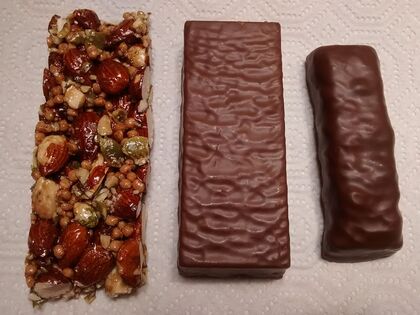 The food pyramid is ancient history, and food in its natural form is becoming an artifact, too. We are changing shape and raising the bar. Individually packaged slender rectangles that fit in a purse, a gym bag, or a pocket are now the shape of food. Once a to-go meal for astronauts, condensed chewy food has replaced traditional farm table fixings. From the cereal aisle to the pharmacy aisle, a growing number of bars crowd the grocery store shelves. There are bars for strength, recovery, weight loss, and calorie supplementation. There are breakfast bars, cereal bars, meal bars, snack bars, and energy bars. Each type of bar comes in a multitude of varieties: gluten free, vegan, low carb, high protein, and keto. No longer is the consumer limited to the basic flavors of chocolate and vanilla. Add to the flavor menu peanut butter, birthday cake, maple donut, orange soda, coconut, and mint chocolate chip to name a few. I admit it; I have tried quite a few bars, but I don’t think I will live long enough to try them all. Though we are people on the run, I can’t eat fast enough to keep up with the speedy supply of emerging types and flavors. The new magic ingredient in this food is protein. It doesn’t matter how much sugar, sodium, or cholesterol the food contains. Somehow, the protein nullifies the ill effects of the other not-so-healthy ingredients. Because this new food originated with the astronauts as space food sticks in the 1960s and was later promoted as power bars by the athletic industry in the 1980s, we assume this culinary innovation must be the brainchild of science, and therefore, it must be good for us. And who doesn’t want to be an astronaut or an elite athlete? We love convenience foods, and if we can make good health simple and convenient, so much the better. Leave it to the powerful food industry to deliver on our other childhood dreams. Large, individually wrapped cookies are marketed as the next innovation in health food. My inner child squeals with delight. She has always known that a row of Oreos paired with a glass of milk was the real breakfast of champions. Boxes of protein cookies now sit next to the bars on the store shelves. They also appear at fast food restaurants. In a plexi-glass case displaying large soft sugar and chocolate chip cookies, there is a rack designated for the oatmeal bars. They show up on the breakfast menu. I try one. My brain says “cookie,” but the menu says “breakfast.” Life can get better with age. Last week I discovered that the food industry isn’t stopping with the cookie. The ultimate dream of every child who ever hated long family dinners, hard broccoli, and slimy fish is now being realized. Boxes filled with small, individually wrapped squares called “healthy candy” fill the end-caps of the health/pharmacy aisles. I pinch myself, “Am I dreaming?” Move over Russell Stover and Whitman; there is a new kid on the block. I will miss the guessing game of choosing a flavor, and the tiny, ruffled paper cups, but some compromises must be made. After all, this candy is serious; it is a meal not an after dinner holiday treat. Though my soft, sweet, innocent inner child is exuberant, the hard shelled outer adult is prone to doubt and worry. What can be next when all of your food dreams are realized? Could food go digital? Will the byte replace the bite? Will food be reimagined or just imaginary? Even my inner child would find that hard to swallow. 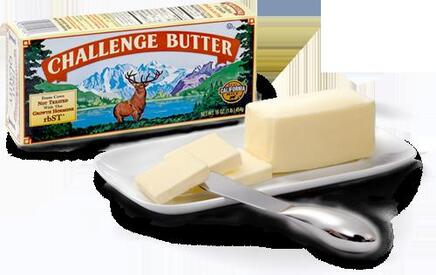 I burned my cheek with a curling iron. Two days later, the area below my left eye had swollen into a squishy lump the size of a baseball. Despite the pound of flesh, my hair still looked like hell. Of course, this happened on a Friday. There were no appointments available at my doctor’s office. I made two attempts at nearby walk-in clinics. On the first attempt, everyone was out to lunch. By the second attempt, the clinic schedule was booked for the rest of the day. Employing the three-strike rule, I went back to the bench. By then, the day was pushing into evening. I weighed my odds: the wound would either get better or worse. If it got better, I would save time and money. If it got worse, I would spend a large portion of the weekend and my 401(k) in the emergency room. I placed my bet on good hygiene and “a tincture of time” as one of my former general practitioners used to say, and I went to the medicine cabinet. After reviewing my arsenal, I selected hydrogen peroxide to cleanse the wound and antibiotic ointment to treat it. These measures did not stop me from obsessively combing the internet instead of attending to my unruly hair. I spent a long, restless night convinced I would die from tetanus. Morning came, and I lived—a small victory for benchwarmers everywhere. When we were kids, we suffered our injuries and left the sleepless nights to our parents. Back then, I would have slathered the burn with butter and got on with my day. If that wasn’t enough intervention, I would have retired to the couch with a soft striped afghan and an afternoon of cartoons. If my mother felt some sympathy for me, she might have brought me warm tea and cinnamon toast. If the situation escalated, the family doctor would have been consulted by phone or stopped by for a late evening house call. The family physician’s entire arsenal fit into a little black medical bag, a supplement to the basics we all had at home. Home medicine cabinets contained far fewer germ-fighting, cough-suppressing, pain-relieving, age-reversing weapons than we have now. The first-aid kit of my youth contained a mercury thermometer, baby aspirin, and Mercurochrome. With luck, there might be a Band-Aid to spare if Chatty Cathy had not suffered a boo-boo while we were playing house. Most other healing agents were found in the kitchen: baking soda, a shot of whiskey, hot tea, honey, chicken soup, cinnamon toast, and butter. Butter was certainly handy in the kitchen where most minor burns occurred, but I discovered that modern internet sites do not recommend butter as a treatment for burns because it traps in the heat and has no antibiotic properties. The exception to the no-butter-to-the-burn rule is when removing hot tar from human flesh. I will keep that in mind in case I prove to be a worse roofer than I am a hair stylist. In any case, I am happy to have a reason to keep butter around in the enlightened age. Mercury-containing products were quietly escorted off the drug store shelves a long time ago, but my knees are permanently pink from Mercurochrome. I may have experienced brain damage from the mercury-laced antiseptic and from chasing those little beads of mercury around the kitchen floor when a thermometer broke. With all of that accumulated mercury and the trapped heat from so much butter, it is no wonder that I am a woman on fire. I now understand menopause and the stir-fried condition of my hair. There was a time when health enthusiasts and food manufacturers tried to convince us that a new product, oleomargarine, was better for us than butter. I think the shift may have started during the mercury years. Eventually, margarine went the way of mercury. It proved to be worse for our health than butter. Let’s face it, butter has staying power. From well-stocked grocery store aisles to ample, soft hips, no amount of fat-shaming or internet advice can turn us against butter. Speaking for myself, I can stand up to the saturated fat in beef and bacon. I eat those meats about as often as I attend a high school reunion. I am willing to remove the slimy skin and fat from chicken which is my diet’s protein mainstay, but the butter stays. I honor it by keeping it an old dish that belonged to my grandmother. I might portion it out in teaspoons like a heroin addict, but I don’t even pretend that I will give it up “tomorrow.” I don’t need to read a recipe or to perform a chemical analysis to know if a dish contains butter. If the food is delicious, it contains butter. Quite frankly, I am astonished that butter does not require a prescription. Is it possible to be anxious or depressed while eating a soft, chewy brownie? How about the high that comes with eating a flaky, buttery biscuit? I am willing to live with the side effects. After feeling the burn, my advice is to get a tetanus booster and a good haircut. Don’t put butter on your burns. Save the butter for the big stuff, the internal injuries—damaged egos and broken hearts. In the event of catastrophic injury, increase the dose and add a scoop of ice cream. If I am wrong about this advice, don’t blame me; it might be the mercury talking. 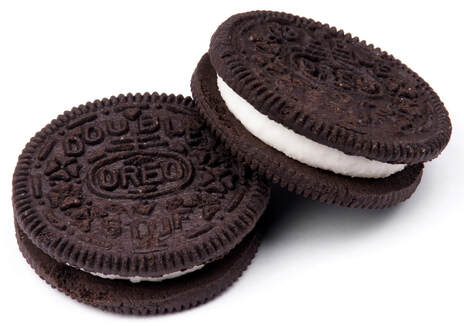 Start the presses and spread the news! There is still time to shop. It is National Oreo Cookie Day. If ever a cookie deserved its own holiday, it is the Oreo. I don’t even mind if the government halts mail delivery. Oreo is the signature product of the National Biscuit Company, the food manufacturing giant better known as Nabisco. The cream-filled cookie also made Hoboken, New Jersey famous for something other than its view of Manhattan. A grocer in Hoboken was the first to sell the treats in cans for twenty-five cents a pound. No one knows where the name Oreo came from; perhaps it is O for the O-shaped cookie, or O for the “Ohs!” uttered by the tasters in Nabisco’s test kitchens. I once thought the Hydrox cookie was a sad wannabee, the second born, a disappointing substitute, but it turns out Hydrox was the first chocolate sandwich cookie of that type on the market. Hydrox made its debut in 1908, four years before Oreo’s introduction in 1912. The Oreo has been the best-selling cookie ever since. Sorry, Hydrox, nice try, and a good idea…but the name Hydrox sounds more like an antiseptic, and the taste, compared to an Oreo, well…a lot like the taste following oral surgery. The Oreo has stayed strong through two world wars, a great depression, and a bazillion weight loss trends. The beloved cookie now comes in double-stuffed, thins, minis, Neapolitan, and Mega Stuff. As of 2019, 450 billion Oreos were sold worldwide. Add the consumption during the COVID pandemic year, and I am sure sales have easily climbed to 1.9 trillion. The National Biscuit Company was granted a trademark for the Oreo on March 14, 1912. National Oreo Cookie Day is celebrated on March 6th because that is the day Nabisco made its application for the trademark. That makes two miracles for the Oreo—the greatest cookie of all time and the fastest turnaround by a government office in history. The product’s tag line is “Milk’s favorite cookie.” Sure, there are a lot of dunkers out there, but there are many ways to eat an Oreo. The best known strategy is for “a kid to eat the middle of an Oreo first and save the chocolate cookie outside for last.” The process is important. Lifting or prying the cookie apart is much less effective than the gentle twist that leaves the creamy layer intact to be scraped off by the eater’s two front teeth. Oreo fanatics have expanded the brand. Oreos are now a staple like flour or sugar. Oreos appear in recipes for pie crusts, pies, cakes, ice cream, milkshakes, candy bars, and are even coated and deep fried at county fairs. Oreos are a snack, a dessert, a special treat, and paired with milk, they are practically a health food. The standard package notes that a serving size is three cookies with twelve servings in a pack. Really? Who can eat just three? I suspect that an entire row is more typical. Three Oreos? That just wets the appetite because Oreos are as addictive as cocaine. They are the preferred party drug of the tea party crowd. Decades ago, I experienced an Oreo overdose. My mother had gone to the hospital to deliver a baby—my brother or sister? I can’t remember because the real event was the Oreo tea party authorized by our father to keep my older sister and me out of his hair. Mary and I each consumed far more than the suggested serving of three Oreos. For dessert, we topped off our tea party meal with the Oreo’s favorite cousin, a bag of M&Ms. When it was time to retire for the night, my sister and I climbed into our bunk beds that were covered with matching white chenille Sleeping Beauty bedspreads. Initially, our stomachs gurgled just a bit, but before we could fall asleep, our guts erupted like Mount Vesuvius. Eventually, we slept well. The nightmare came for our mother who returned home with a new baby and plenty of laundry to do. The entire episode was easily forgotten by me and my sister. It may have contributed to our parents' later divorce, but Mary and I never fell out of love with Oreo cookies or tea parties. Oreos have been around a long time. Even their current design has remained unchanged since 1952, longer than I’ve been alive. I like things that stand up to the test of time and remain sweet no matter how many times we encounter them. I feel a tea party coming on. Hold the M&Ms. |
AuthorLilli-ann Buffin Archives
July 2024
Categories
All
|
 RSS Feed
RSS Feed